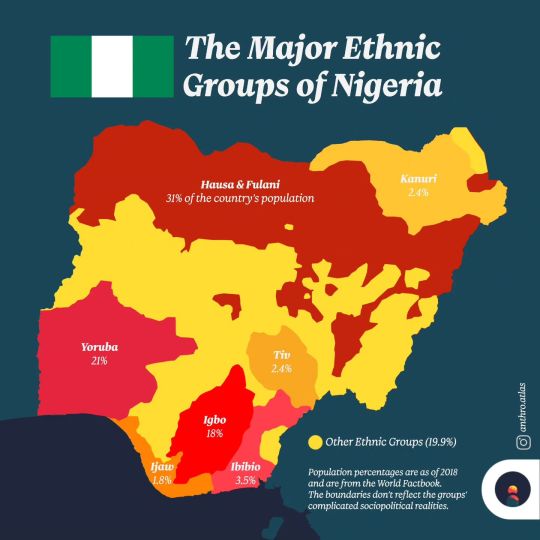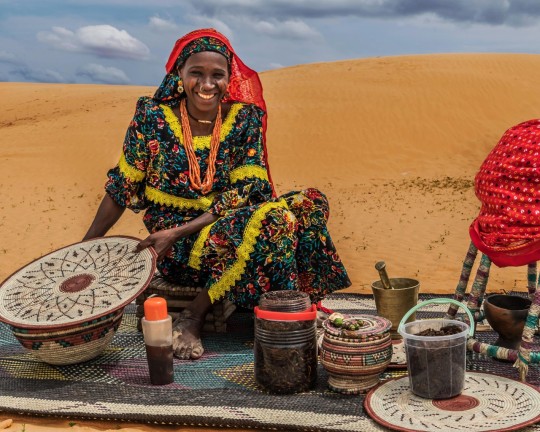#Kanuri
Text

Kanuri woman, Cameroon, by Mundoexplora
#kanuri#cameroon#africa#central africa#traditional fashion#traditional clothing#folk clothing#cultural clothing
824 notes
·
View notes
Text

好久没上tumblr了☺️放一下稿
4 notes
·
View notes
Text
https://www.thenewsbrick.com/is-immunotherapy-recommended-for-kids
If you are looking for something effective and safer for the treatment, you will be happier to know that immunotherapy is the treatment approach you can trust. According to Dr. Kanury Rao, immunotherapy is one of the most effective options that can be used for the treatment of allergies in young kids. But before you go for this treatment, you should collect some important details.
0 notes
Link
Vishwak Sen, Nivetha Pethuraj, Rao Ramesh, Aadi, Ajay, Tharun Bhascker Dhaassyam, Akshara Gowda, Rati Hulji, Kadambari Khan, Chandu Kanuri, Koushik Mahata, Jabardasth Mahesh, Prudhviraj, Rohini
#Vishwak Sen#Nivetha Pethuraj#Rao Ramesh#Aadi#Ajay#Tharun Bhascker Dhaassyam#Akshara Gowda#Rati Hulji#Kadambari Khan#Chandu Kanuri#Koushik Mahata#Jabardasth Mahesh#Prudhviraj#Rohini
0 notes
Link
Dr. Kanury Rao also known as Kanury Venkata Subba Rao is an Indian immunologist. He was the head of the Drug Discovery Research Centre at the Translational Health Science and Technology Institute.
0 notes
Text
Shoutout to all African LGBTQ+ folks.
Africa has thousands of ethnicities, so I tried to add all nationalities and popular ethnicities, but please be aware there are thousands of beautiful ethnicities, cultures, and people to celebrate.
Shoutout to all Akan LGBTQ+ folks.
Shoutout to Ethiopian LGBTQ+ folks.
Shoutout to all Kenyan LGBTQ+ folks.
Shoutout to all Amhara LGBTQ+ folks.
Shoutout to all Beninese LGBTQ+ folks.
Shoutout to all Chewa LGBTQ+ folks.
Shoutout to all Liberian LGBTQ+ folks.
Shoutout to all Fulani LGBTQ+ folks.
Shoutout to all Malawian LGBTQ+ folks.
Shoutout to all Nigerian LGBTQ+ folks.
Shoutout to all Baka LGBTQ+ folks.
Shoutout to all Nigerien LGBTQ+ folks.
Shoutout to all Hausa LGBTQ+ folks.
Shoutout to all Ghanaian LGBTQ+ folks.
Shoutout to all Guinea-Bissauan LGBTQ+ folks.
Shoutout to all Hutu LGBTQ+ folks.
Shoutout to all São Toméan LGBTQ+ folks.
Shoutout to all South African LGBTQ+ folks.
Shoutout to all Algerian LGBTQ+ folks.
Shoutout to all Igbo LGBTQ+ folks.
Shoutout to all Congolese LGBTQ+ folks.
Shoutout to all Sudanese LGBTQ+ folks.
Shoutout to all South Sudanese LGBTQ+ folks.
Shoutout to all Kanuri LGBTQ+ folks.
Shoutout to all Cameroonian LGBTQ+ folks.
Shoutout to all Rwandan LGBTQ+ folks.
Shoutout to all Kongo LGBTQ+ folks.
Shoutout to all Angolan LGBTQ+ folks.
Shoutout to all Luba LGBTQ+ folks.
Shoutout to all Burkinabé LGBTQ+ folks.
Shoutout to all Ivorian LGBTQ+ folks.
Shoutout to all Chadian LGBTQ+ folks.
Shoutout to all Mongo LGBTQ+ folks.
Shoutout to all Somalian LGBTQ+ folks.
Shoutout to all Basotho LGBTQ+ folks.
Shoutout to all Botswanan LGBTQ+ folks.
Shoutout to all Malian LGBTQ+ folks.
Shoutout to all Tunisian LGBTQ+ folks.
Shoutout to all Mossi LGBTQ+ folks.
Shoutout to all Somali LGBTQ+ folks.
Shoutout to Togolese LGBTQ+ folks.
Shoutout to all Central African LGBTQ+ folks.
Shoutout to all Ugandan LGBTQ+ folks.
Shoutout to all Nilotes LGBTQ+ folks.
Shoutout to all Libyan LGBTQ+ folks.
Shoutout to all Oromo LGBTQ+ folks.
Shoutout to all Tanzanian LGBTQ+ folks.
Shoutout to all Zimbabwean LGBTQ+ folks.
Shoutout to all Seychellois LGBTQ+ folks.
Shoutout to all Asante LGBTQ+ folks.
Shoutout to all Equatorial Guinean LGBTQ+ folks.
Shoutout to all Senegalese LGBTQ+ folks.
Shoutout to all Shona LGBTQ+ folks.
Shoutout to all Maasai LGBTQ+ folks.
Shoutout to all Zambian LGBTQ+ folks.
Shoutout to all Namibian LGBTQ+ folks.
Shoutout to all Khoekhoe LGBTQ+ folks.
Shoutout to all Mozambican LGBTQ+ people.
Shoutout to all Djiboutian LGBTQ+ folks.
Shoutout to all Songhai LGBTQ+ folks.
Shoutout to all Gabonese LGBTQ+ folks.
Shoutout to all Yoruba LGBTQ+ folks.
Shoutout to all Cameroonian LGBTQ+ folks.
Shoutout to all Zulu LGBTQ+ folks.
Shoutout to all Eritrean LGBTQ+ folks.
Shoutout to all Malagasy LGBTQ+ folks.
Shoutout to all Sierra Leonean LGBTQ+ folks.
Shoutout to all Mauritanian LGBTQ+ folks.
Shoutout to all Mandé LGBTQ+ folks.
Shoutout to all Guinean LGBTQ+ folks.
Shoutout to all Burundian LGBTQ+ folks.
Shoutout to all Beti-Pahuin LGBTQ+ folks.
Shoutout to all Cabo Verdean LGBTQ+ folks.
Shoutout to all Eswatini LGBTQ+ folks.
Take pride in it all. Your culture, your identity, it’s all so beautiful. Celebrate where you are from and who you are. It makes you you, and that is something to be proud of.
Post for Oceanic folks, post for Middle Easterners, post for Asians, post for Hispanics, post for Native Americans, post for Caribbeans
#mental health#positivity#self care#mental illness#self help#recovery#Africa#lgbt#lgbtq positivity#lgbtq#lgbtqia#gay#lesbian#wlw#sapphic#bisexual#trans#transgender#intersex#pansexual#nonbinary#asexual#aromantic#aroace#queer#genderfluid#trans masc#trans femme#butch#femme
144 notes
·
View notes
Photo

Ethnic groups of Nigeria
The Federal Republic of Nigeria is home to between 250 and 400 distinct ethnic groups and around 500 different spoken languages. However, only eight major ethnic groups comprise 81% of the population (2018 estimate), and these groups are the Hausa, Fulani, Yoruba, Igbo, Ibibio, Kanuri, Tiv, and Ijaw. The great ethnic diversity of the nation has its benefits and drawbacks. On the one hand, it showcases Nigeria’s vibrant cultural tapestry. However, it has also played a part in the long-term political, economic, and religious conflicts that have afflicted the nation. Sources: Federal Ministry of Information and National Orientation (Nigeria) & World Factbook
by anthro.atlas
85 notes
·
View notes
Photo

Kingdom of Kanem
The Kingdom of Kanem (aka Kanim) was an ancient African state located in modern-day Chad, which flourished from the 9th to 14th century CE. With its heartland in the centre of the African continent on the eastern shores of Lake Chad, the kingdom was formed by a confederation of nomadic peoples and then ruled by the Saifawa dynasty. The city prospered thanks to its position as the hub of trade connections with central African peoples, the Nile Valley, and North African states on the other side of the Sahara Desert. The kingdom adopted the Islamic religion after long contact with Muslim clerics and traders from the 11th century CE onwards. In the 1390s CE Kanem's king was forced to flee the invading Bulala people and so set up a new state on the other side of Lake Chad, which would become the Bornu Empire, sometimes known as the Kanem-Bornu Empire, which lasted until the late 19th century CE.
Origins & Formation
The Kingdom of Kanem, located just to the east of Lake Chad in Central Africa, may derive its name from the Teda and Kanuri term for 'south' (anem) which refers to its position in relation to the better-known states to the north. Perhaps, too, the name reflects the oral tradition that the people of Kanem had once migrated from the Sahara Desert following that region's increased desiccation. The process which saw the formation of the kingdom of Kanem is here summarised by the historian P. Curtin:
Kanem passed through a process of state-building different from that of the western Sudan. The nucleus was a nomadic confederation of peoples speaking separate languages of the Teda-Daza group, probably formed in the 9th century. Nomadic confederations of this kind are common enough in history; the unusual thing is that this one held together. Sometime before the early twelfth century it had become sedentary itself, with Njimi as its permanent capital. (75)
The first mention of Kanem in texts dates to 872 CE and the work of the Arab historian and geographer al-Yaqubi (in his Kitab al-Buldan). Even if the state may have been formed a century earlier, it confirms the above political process as we are informed that the population is still at that time mostly composed of nomads who live in huts of reeds and who have not yet formed permanent settlements. We are also told that the kings of Kanem (here and in other Arab sources called Zaghawa) also ruled over other kings, likely the tribes they had conquered in the region north and east of Lake Chad. The Arab historian al-Muhallabi, writing in the 10th century CE, notes that the kingdom now has two towns and its wealth is evidenced by large herds of cattle, sheep, camels, and horses.
Continue reading...
28 notes
·
View notes
Text

Kanuri woman, Chad, by LaVoixduTchad
#kanuri#chad#africa#central africa#traditional clothing#traditional fashion#cultural clothing#folk clothing
315 notes
·
View notes
Text






老公呀你是我老公
5 notes
·
View notes
Text
https://blognow.co.in/a-brief-introduction-to-allergen-immunotherapy
Various immunotherapy methods are available in the medical sector. Among all, allergen immunotherapy is one of the ways that can change the body’s reaction or response against an allergy or allergen. Unlike other medications that only reduce the symptoms, immunotherapy is the best treatment approach that can treat the root cause of the allergy. According to Dr. Kanury Rao, allergen immunotherapy is the best way to reduce or prevent allergies as it can turn the reactions to the body off to the possible causes. However, you will need to be a little patient for this.
0 notes
Text
Your name is Kanuri Kanuri, preferred honorific Mr.. You use it/its pronouns, and your blood runs Jade; Virnius is your sign. For reasons you cannot define, you feel something of an affinity to the idea of being a Witch. You are 7 sweeps old, and you've an interest in running, and dabble in troll mycology- At least, when the mood allows. You were brought up by your aggravating lusus, mama rat, and you have never heard of your ancestor, The Delicate. If forced to describe your sexuality, you would say nb4nb, and leave it at that. Sickle, your well-serving weapon, is your everyday companion, you can't imagine life without it
via roll-a-troll https://ift.tt/yPRA09M, do as you please
2 notes
·
View notes
Link
Vijay Antony, Kavya Thapar, Y.G. Mahendran, Radha Ravi, Yogi Babu, Mansoor Ali Khan, Hareesh Peradi, John Vijay, Dev Gill, Ajay Ghosh, Chandu Kanuri, Sai Dheena, Johny Antony, Radha Krishnamoorthy, Priyadharshini
#Vijay Antony#Kavya Thapar#Y.G. Mahendran#Radha Ravi#Yogi Babu#Mansoor Ali Khan#Hareesh Peradi#John Vijay#Dev Gill#Ajay Ghosh#Chandu Kanuri#Sai Dheena#Johny Antony#Radha Krishnamoorthy#Priyadharshini Rajkumar#Chandrasekar Koneru#Sheela Rajkumar#Shivanya#Shivangi Verma#Fawaz Zayani
0 notes
Text
Tech Today: NASA’s Moonshot Launched Commercial Fuel Cell Industry - NASA
New Post has been published on https://sunalei.org/news/tech-today-nasas-moonshot-launched-commercial-fuel-cell-industry-nasa/
Tech Today: NASA’s Moonshot Launched Commercial Fuel Cell Industry - NASA

Agency’s technology development prepared fuel cells for tomorrow’s renewable energy grids
NASA’s investment in fuel cells dates to the 1960s when most of the world was still reliant on fossil fuels. A fuel cell generates electricity and heat when hydrogen and oxygen bond through an electrolyte. Because its only by-product is water, it’s an environmentally friendly power source.
The agency’s interest in fuel cells came when NASA needed to fuel missions to the Moon. Engineers at NASA’s Johnson Space Center in Houston looked to fuel cells because they could provide more energy per pound than batteries could over the course of a long mission. At that time, fuel cells were just a concept that had never been put to practical use.
NASA funded three companies, including a portion of Pratt & Whitney, to develop prototypes. For Apollo mission fuel cells, NASA selected the Pratt & Whitney group, which soon became UTC Power, as the supplier of all the space shuttle fuel cells. With the agency funding and shaping its technology development, UTC Power eventually started offering commercial fuel cells. The company is now known as HyAxiom Inc. and operates from the same plant in South Windsor, Connecticut, that produced fuel cells for the agency.
The company released its first commercial fuel cell in the mid-1990s and introduced its current product line about a decade later.
“The models they built for these products we use today had a lot of the electrochemistry understanding from the space program,” said Sridhar Kanuri, HyAxiom’s chief technology officer.
HyAxiom now produces around 120 units per year but expects to ramp up as government investments in fuel cells increase. The U.S. government plans to use fuel cells to store energy from renewable sources.
Today’s commercial fuel cell companies received much of their knowledge base from NASA. John Scott, NASA’s principal technologist for power and energy storage said, “All these companies trace their intellectual property heritage, their corporate heritage, even the generations of personnel to those companies NASA funded back in the early 1960s.”
0 notes